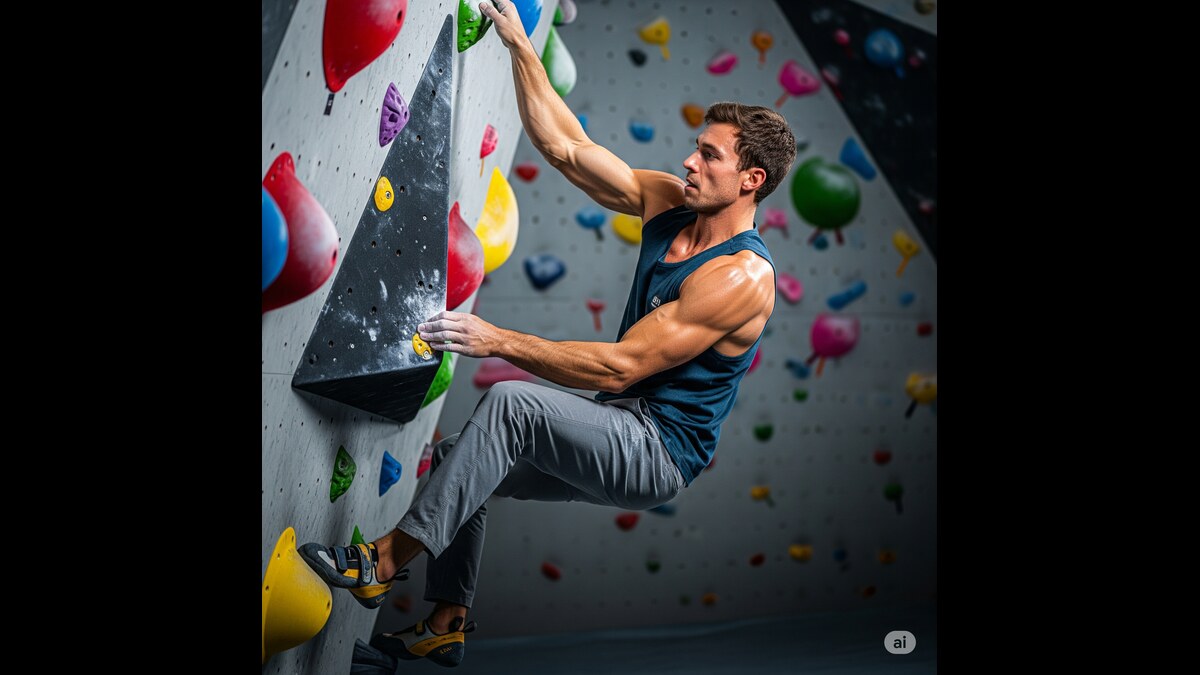Ever felt your fingers slip off a tiny hold, your heart sinking as the climb ends too soon? Strong hands are the secret to conquering tough routes and boulder problems, making grip strength a game-changer for rock climbers. Weak holds lead to quick fatigue and even injuries, but with the right approach, you can tackle harder walls and keep climbing longer.
This guide blends practical workouts, like hanging exercises, with mindful habits to power up your hands and sharpen your focus. Backed by data showing top climbers have up to 50% stronger grips than beginners, we’ll share routines, recovery tricks, and real stories to inspire you. Get ready to strengthen your hold and climb with confidence!
Why Strong Grip Strength Matters for Climbers
Your ability to hold onto rocks is the foundation of every move, deciding how long you can stay on without burning out. Weak hands mean even great footwork can’t stop slips, leading to frustration and slow progress. Building strong grip strength opens up new possibilities, letting you tackle steep overhangs and smooth slabs with ease.
Beyond climbing better, stronger hands reduce the chance of getting hurt, as toughened tissues handle the sport’s constant pulling. Climbers who focus on their grip often avoid strains, enjoying regular sessions without breaks. Ultimately, it’s about loving climbing more, turning occasional trips into a lifelong passion.
Understanding the Muscles Behind Your Climbing Grip
Your hold comes from arm muscles that bend and straighten your fingers, plus smaller hand muscles working together to grab surfaces. These help with tight finger grips and overall arm power. Knowing these muscles is key to improving grip strength for climbing, as it guides workouts that match real climbing demands.
Connective tissues also play a big role, passing strength from muscles to bones while adapting slowly to stress—so you need gradual training. Ignoring areas like wrist supports can cause uneven strength and pain. Picturing these muscles during workouts adds a mindful focus, boosting attention and making sessions more effective.
Warm-Up Routines to Prep Your Grip for Climbing
Start with active stretches, like arm swings and finger flicks, to wake up muscles and increase blood flow to avoid sudden injuries. Use light band pulls to activate straightening muscles for balanced prep. These steps are crucial for building grip strength, setting you up for safe, effective progress.
Next, try gentle hangs from a bar for 10-15 seconds, slowly building your limit without overdoing it. Add wrist twists to loosen joints and reduce stiffness. These moves warm your body and mind, creating a strong connection for better training results.
Mastering Dead Hangs for a Stronger Climbing Grip
Dead hangs involve hanging from a bar with relaxed shoulders, engaging your fingers and arms in a steady hold to build lasting power. Start with 20-second holds, moving to longer times or adding weight for a challenge. This exercise directly boosts your climbing grip by mimicking long holds on routes.
Try different hand positions, like wide open or half-closed, to target weak spots. Track your hang times weekly to see progress and stay motivated. Adding calm breathing during hangs turns this into a mindful practice, strengthening both your body and mental toughness.
Using Farmer’s Walks to Build Hand Strength for Climbing
Farmer’s walks mean carrying heavy weights, like dumbbells, while walking, creating steady hand power through constant pulling. Aim for 30-40 meter walks with weights that push you but keep your form solid. This full-body move supports hand strength for climbing by building the stamina needed for long routes.
Switch up grips with thick bars or flat objects for pinches to mimic varied rock holds. Rest well between sets to allow recovery and avoid tiredness piling up. Imagining a climbing moment during walks adds a mental spark, strengthening brain connections for real rock performance.
Wrist and Arm Exercises to Enhance Your Climbing Grip
Wrist rolls with weights target bending muscles: hold palms up, roll slowly for 12-15 reps to build core strength. Backward rolls, palms down, strengthen straightening muscles to prevent injuries. These focused moves are key to improving grip for rock climbing, targeting often-ignored areas that support finger endurance.
Try rice bucket twists—plunging hands into rice and turning—for varied resistance that improves hand skills. Do 3 sets per session, focusing on smooth motions. Pairing these with mental images, like grabbing a distant hold, adds mindfulness, making workouts more engaging and effective.
Advanced Hangboard Tips for Rock Climbing Grip Strength
Hangboards offer precise training with different edges; start with larger grips for repeats—7 seconds on, 3 off, for 6 cycles. Move to smaller edges as strength grows, always prioritizing form over intensity. This tool is a game-changer for rock climbing grip strength, tailoring your hands to the sport’s needs.
For advanced climbers, try one-arm hangs to build single-side power, but only after mastering basics. Use a timer app for accuracy and log sessions to track growth. Picturing a successful climb during hangs turns this into a full-body and mind practice, boosting confidence and results.
Nutrition and Recovery for Better Grip Strength
Fuel your training with foods rich in protein, like nuts or lean meats, to help muscles and tissues heal. Add anti-inflammatory foods, like turmeric or fish oils, to speed up recovery. Good eating supports grip strength for climbing, ensuring your body bounces back stronger after workouts.
Focus on sleep and light recovery days with gentle stretching to refresh your body. Stay hydrated, as dryness weakens hand endurance. Listening to your body’s signals during rest builds habits that prevent burnout and keep climbing fun for the long haul.
Common Mistakes to Avoid When Building Grip Strength
Pushing too hard too soon can strain tissues; always increase intensity slowly based on your current level. Skipping rest days piles up fatigue, reducing your gains over time. Avoiding these errors is vital for improving grip strength, helping you train smarter.
Ignoring opposite muscles, like straighteners, creates uneven strength that invites injuries—so balance your routine. Skipping warm-ups risks harming unprepared muscles. Keeping a journal of your sessions adds mindfulness, helping you spot and fix mistakes early.
Success Stories: Climbers Who Mastered Their Grip for Climbing
Meet Sarah, a weekend climber who jumped from easier to medium boulder grades with steady hangs and mental focus. She credits blending physical drills with imagining her climbs for her success. These stories show the power of dedicated hand strength work.
Another climber, Mike, overcame finger pain with balanced arm exercises and recovery foods, returning to routes stronger than ever. His journey highlights persistence and a well-rounded approach. These real tales can inspire you to shape your own path to a stronger grip for climbing.
FAQs on Boosting Grip Strength for Rock Climbing
How fast can I see gains from hand training?
You might notice improvements in 4-8 weeks with regular practice, depending on consistency and your starting point. Track hang times to measure progress accurately.
Is hangboard training safe for beginners?
Yes, but start with bigger edges and short holds to build strength slowly. Check with a coach if you’re unsure about your form.
What role does mindset play in grip strength?
Focusing your mind, like using steady breathing, improves brain efficiency and reduces tiredness. It turns routine exercises into powerful habits.
Can food alone improve my grip?
Eating well aids recovery but needs workouts for the best results. Focus on foods that support joint and tissue health.
How do I fit grip training with climbing days?
Schedule grip workouts on non-climbing days to avoid overdoing it. Listen to your body for signs you need rest.
Conclusion
Mastering grip strength for rock climbing combines body knowledge, targeted routines like hangs and wrist rolls, and mindful rest habits that make this approach unique. From warm-ups to advanced hangboards, these strategies build hand power and mental focus, promising steady progress and fewer injuries. Real climber stories highlight the rewards of sticking with it, inspiring you to try these fresh techniques.




